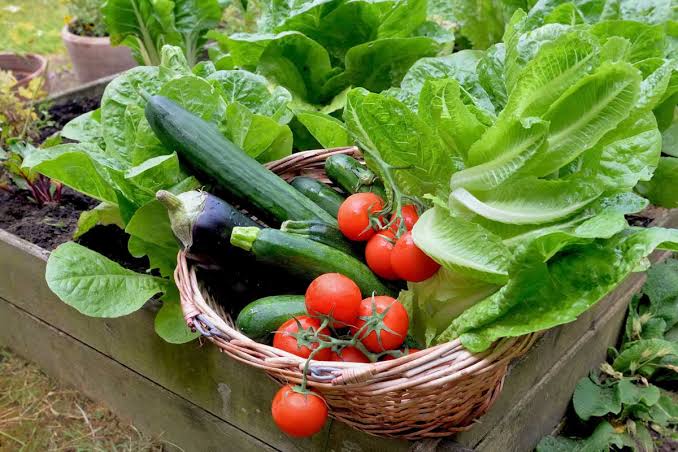There’s something truly rewarding about growing your own vegetables. Not only do you get access to fresh, flavorful produce right in your backyard (or even on a balcony), but you also save money, eat healthier, and connect with nature. The best part? You don’t need to be an expert gardener to get started. With the right guidance, anyone—even complete beginners—can learn how to plant vegetables and enjoy the fruits (and veggies!) of their labor.In this guide, we’ll walk you through how to plant vegetables for beginners step by step. From choosing the right crops to preparing soil, watering, and harvesting, you’ll discover all the hacks that make growing veggies simple, fun, and impressive enough to wow your friends and family.🌱 Why Start a Vegetable Garden?Before diving into the practical steps, let’s quickly look at the benefits of growing your own vegetables:Freshness – Nothing beats the taste of vegetables harvested minutes before eating.Health – Homegrown food has no unnecessary chemicals or preservatives.Savings – A small garden can reduce your grocery bills significantly.Sustainability – Growing your own reduces packaging waste and transport emissions.Joy – Watching seeds sprout and thrive is deeply satisfying.🥕 Step 1: Choose Easy Vegetables for BeginnersIf you’re new, start with vegetables that are easy to grow and forgiving of mistakes. Some great beginner-friendly options include:Lettuce & Leafy Greens – Fast-growing and can be harvested continuously.Radishes – One of the quickest crops; ready in about 3–4 weeks.Carrots – Low-maintenance and great for cooler weather.Tomatoes – Popular, rewarding, and perfect for summer.Green Beans – High yield with minimal effort.Zucchini – Prolific growers that almost guarantee success.👉 Pro Tip: Choose 3–5 vegetables to start instead of planting too many varieties at once.🌿 Step 2: Find the Right SpotVegetables need the right environment to thrive:Sunlight – Most vegetables need at least 6–8 hours of direct sun daily.Soil – Loose, well-drained soil is best.Accessibility – Pick a spot that’s easy to water and maintain.Containers – If you don’t have a yard, you can grow veggies in pots, raised beds, or even window boxes.🌾 Step 3: Prepare Your SoilHealthy soil = healthy plants. Here’s a quick beginner-friendly hack:Clear weeds and grass from your chosen area.Loosen soil with a shovel or garden fork.Add organic matter like compost or well-rotted manure. This improves soil fertility naturally.If using containers, buy a vegetable-specific potting mix for the best results.🌱 Step 4: Plant Your Seeds or SeedlingsHere’s how to plant vegetables as a beginner without stress:Read seed packets – They’ll tell you depth, spacing, and sun/water requirements.Direct sowing – Some vegetables (like radishes, carrots, beans) grow best when planted directly into the soil.Transplants – Tomatoes, peppers, and herbs often do better when started as small plants instead of seeds.👉 Hack: Use a pencil or chopstick to poke holes for seeds—easy and precise!💧 Step 5: Watering Made SimpleWatering is where many beginners struggle, but it doesn’t have to be complicated.Water consistently—most vegetables need about 1 inch per week.Water deeply, not lightly—encourage roots to grow downward.Morning watering is best to prevent evaporation and fungal issues.For containers, check soil moisture daily since pots dry out faster.🌼 Step 6: Care and Maintenance HacksOnce your vegetables are growing, here’s how to keep them healthy:Mulch with straw, shredded leaves, or wood chips to keep soil moist and reduce weeds.Weed regularly—but don’t stress; a few won’t ruin your garden.Support tall plants like tomatoes with stakes or cages.Pinch or prune herbs and leafy greens to encourage growth.🦋 Step 7: Natural Pest ControlDon’t let pests ruin your garden! Try these beginner-friendly solutions:Companion planting – Grow marigolds or basil near tomatoes to deter pests.Hand-picking – Remove visible bugs (like caterpillars) by hand.Neem oil or soapy water – Spray gently on leaves to deter aphids and mites.🌽 Step 8: Harvesting Your VegetablesThe most exciting part of planting vegetables is harvesting!Lettuce & herbs – Snip outer leaves and let the rest keep growing.Tomatoes – Harvest when they’re firm, glossy, and fully colored.Carrots & radishes – Check size by pulling one or two as testers.Zucchini – Pick while still small (6–8 inches) for the best flavor.👉 Hack: Harvest often to encourage plants to produce more.✅ Beginner-Friendly Vegetable Gardening HacksHere’s a quick checklist of easy hacks for planting vegetables you’ll want to remember:Start with easy crops like lettuce, beans, and radishes.Choose a sunny spot with 6–8 hours of sunlight.Use compost-rich soil for best growth.Mix sand with tiny seeds (like carrots) to spread evenly.Try raised beds or containers if space is limited.Water deeply in the morning to avoid disease.Mulch to save time on weeding and watering.Harvest frequently to keep plants productive.ConclusionLearning how to plant vegetables for beginners is easier than it looks—and it’s one of the most rewarding hobbies you can take up. With just a few simple steps—choosing the right crops, preparing soil, planting correctly, watering consistently, and harvesting at the right time—you’ll soon be impressing your friends with your green thumb and your delicious, homegrown produce.Whether you’re in the United States, United Kingdom, or Canada, these tips and hacks will help you create a thriving vegetable garden that’s fun, affordable, and sustainable.So grab some seeds, roll up your sleeves, and start your gardening journey today. Your future self—and your dinner plate—will thank you. 🌱🥕🍅

